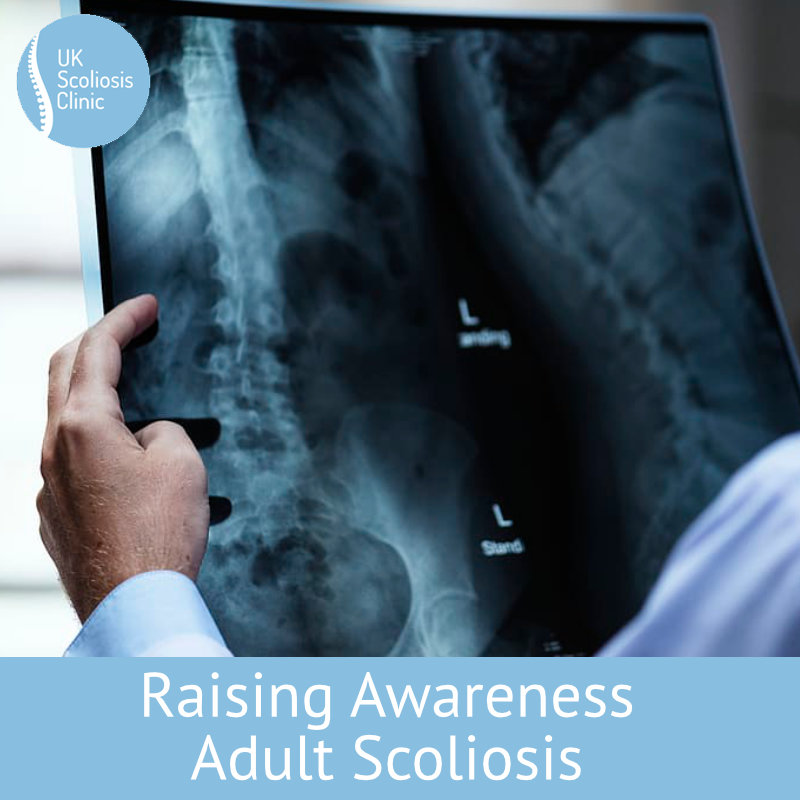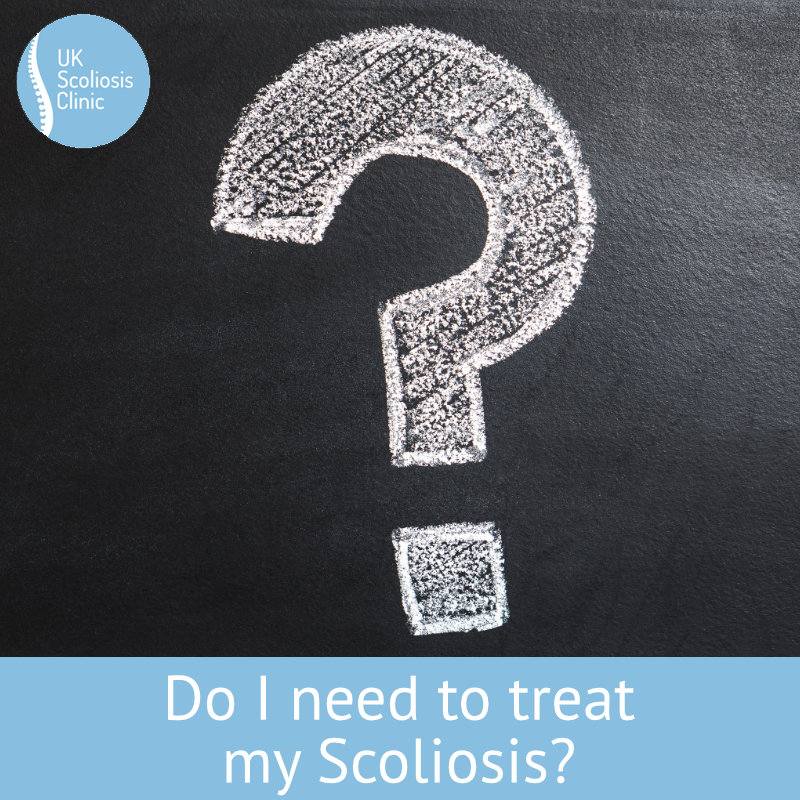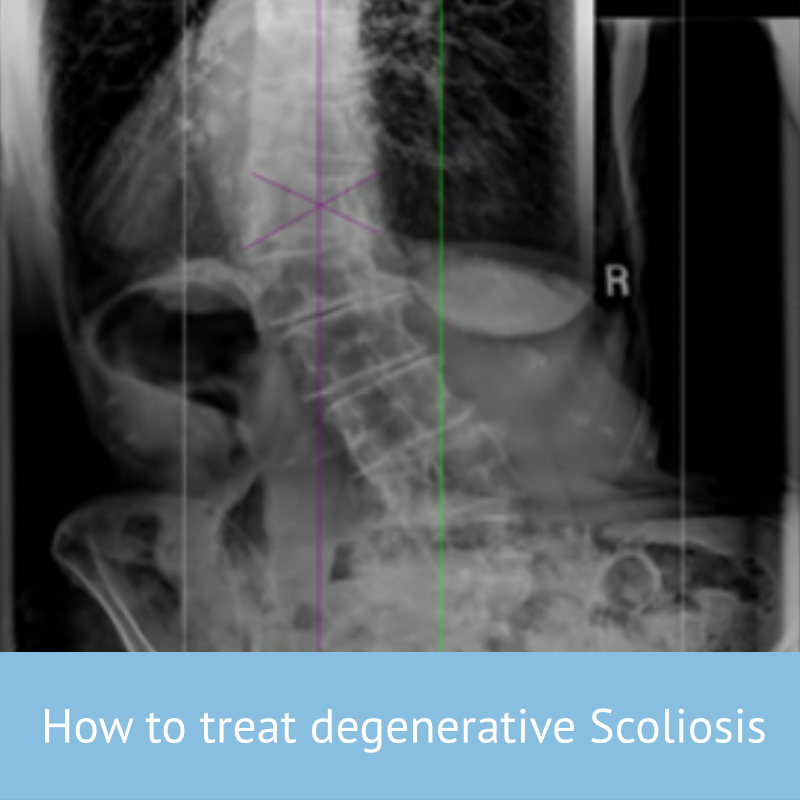
Scoliosis is a condition which affects people of all ages – patients right from birth to old age present at scoliosis clinics around the world, seeking help for many forms of the condition every year. Despite this, there is somewhat of a bias toward thinking of scoliosis as a “young persons” condition – while there are some legitimate reasons for this perception, it’s not an accurate one. As many as one in three over 60’s actually suffer from Scoliosis, struggling with issues such as pain and discomfort which, in many cases, could be treated. This Scoliosis awareness month the UK Scoliosis clinic is focusing on raising awareness about scoliosis in adults – a lesser discussed, but equally important condition.
What is adult Scoliosis?
Scoliosis, for those who don’t know – is a condition in which the spine “curves” from side to side. A normal spine can and should have a natural curvature – however, this should be “Front to back”, so that when viewed from the side the spine looks something like an “S”. This natural curvature is not only normal but is actually critical to allowing us to move and remain balanced properly! Scoliotic curves, in which the spine looks like an “S” when viewed from behind are the opposite – they destabilise the spine causing pain, discomfort, aesthetic problems and, in serious cases, can even interfere with breathing. Scoliosis is a condition which tends to progress over time, meaning it usually gets worse without treatment. Very often, scoliosis is diagnosed in younger teenagers – with girls between the ages of roughly 10 and 15 being the “classic” risk group. This group also attracts the attention of much of the scientific literature, and almost all of the “social” content relating to the condition – but in fact, far more adults, especially older adults, suffer with scoliosis than do younger people.
Adult Scoliosis then, is technically any scoliosis case that exists either in those over 18, or those having reached skeletal maturity, either definition is valid but most scoliosis specialists would prefer the latter since we are focused more on the condition itself than an arbitrary point of “adulthood.”
There are two main types of adult scoliosis. Pre-existing adult scoliosis is essentially a case of scoliosis which is continuing from an earlier age (usually adolescent scoliosis). In adulthood, a continuing case of scoliosis typically becomes known as Adolescent Scoliosis in Adults or ASA. ASA can be discovered in adults of any age, but many ASA cases are already known from treatment earlier in life.
The second type is Degenerative De-Novo Scoliosis (sometimes noted as DDS) – this is the development of a new scoliosis case, usually as a result of spinal degeneration.
What causes Scoliosis in Adults?
ASA – that was scoliosis carried into adulthood from adolescence, isn’t caused in adulthood – it may or may not worsen depending on a number of factors, but the condition originated at an earlier point in life. Degenerative scoliosis is somewhat unusual in the scoliosis world since we understand its cause well – it’s due to wear and tear on the spine, but it is also strongly associated with a variety of conditions. Osteoporosis, degenerative disc disease, compression fractures and spinal canal stenosis have all been implicated in the development of degenerative scoliosis.
Since De-Novo scoliosis is a consequence of spinal degeneration with age, it rarely presents before 40 years of age – although, in patients with no known history of scoliosis, differentiation from degenerative idiopathic scoliosis may be difficult. It is thought that as many as 40% of over 60’s suffer from de-novo scoliosis[1], although a percentage of these cases will be undiscovered scoliosis from earlier in life. In fact, a good number of adult scoliosis cases are discovered through an investigation for another condition (such as back pain).
What is the prognosis and treatment for Adult Scoliosis?
ASA can be considered both stable (progression is very slow or non-existent) or unstable, progression is continuing. Whether an ASA case will progress quickly, slowly, or not at all may well depend on the size of the curve itself when adulthood is reached. Research has suggested that simply put, large curves tend to get worse – smaller curves may well be stable. Weinstein et al. and Ascani et al. have reported results showing that children with curves < 30° at skeletal maturity did not demonstrate curve progression into adulthood, while the majority of curves > 50° progress at approximately 1° per year.[2] The degree of progression will be the best guide for treating ASA cases – bracing, exercise or even just periodic monitoring could all be the right approach, depending on the case.
De-Novo scoliosis is a condition related to ageing – and since we can’t stop ageing itself, De-Novo Scoliosis always continues – however, the impact upon a person’s life can be greatly minimised with the correct treatment. Patients with de-novo or degenerative scoliosis will often experience constant back and leg pain which makes it difficult for them to walk or stand for any period of time. They may become aware that they cannot stand up straight and lean towards one side, this becomes more noticeable the longer they are upright. Frequently they don’t find relief with medication, or through more standard conservative treatment (such as chiropractic or physiotherapy) and they are not suitable for surgery due to osteoporosis i.e. bone weakening.
The good news is that recent advances in non-surgical treatment have shown significant improvement in terms of reduction of pain and symptoms in those with adult scoliosis. One approach involves the patient learning how to self-correct their abnormal posture, not just strengthen their lower back or core – indeed, studies show that simple, exercise based approaches can reduce pain in adult scoliosis cases.[3]
The most effective approach would be the use of a customised brace, such as a ScoliBrace which helps to support the posture in a more comfortable position, pain is reduced (even with part-time bracing)[4] and quality of life is improved. Indeed, De-Novo Scoliosis patients often respond well to a gentle supportive brace, which helps to keep them upright and less tilted thus they can walk or stand more comfortably for longer periods of time.
Treatment for adult scoliosis
The main takeaway from this blog, and from our Scoliosis awareness efforts this month, should be that treatment options for adults with scoliosis do exist and, if you’re within travelling distance, they’re available at the UK Scoliosis Clinic!
[1] ‘Scoliosis in adults aged forty years and older: prevalence and relationship to age, race, and gender‘
Kebaish KM, Neubauer PR, Voros GD, Khoshnevisan MA, Skolasky R, Spine 2011 Apr 20;36(9):731-6.
[2] Weinstein SL, Ponseti IV: Curve progression in idiopathic scoliosis. J Bone Joint Surg (Am) 1983, 65:447-455.
Weinstein SL, Zavala DC, Ponseti IV: Idiopathic scoliosis: longterm follow-up and prognosis in untreated patients. J Bone Joint Surg (Am) 1981, 63:702-712.
Ascani E, Bartolozzi P, Logroscino CA, Marchetti PG, Ponte A, Savini R, Travaglini F, Binazzi R, Di Silvestre M: Natural history of untreated idiopathic scoliosis after skeletal maturity. Spine 1986, 11:784-789.
[3] ‘Scoliosis-Specific exercises can reduce the progression of severe curves in adult idiopathic scoliosis: a long-term cohort study’
Negrini A, Donzelli S, Negrini M, Negrini S, Romano M, and Zaina F 2015,, Scoliosis Jul 11 10:20
[4] Scoliosis bracing and exercise for pain management in adults—a case report Weiss et al, J Phys Ther Sci. 2016 Aug; 28(8): 2404–2407
‘Effects of Bracing in Adult With Scoliosis: A Retrospective Study‘
Palazzo C, Montigny JP, Barbot F, Bussel B, Vaugier I, Fort D, Courtois I, Marty-Poumarat C, Arch Phys Med Rehabil. 2016 Jun 22. pii: S0003-9993(16)30256-8. doi: 10.1016/j.apmr.2016.05.019




